




Related bibliographies:
Reptiles
 Snakes Snakes
 Antaresia Antaresia
 Aspidites Aspidites
 Bothrochilus Bothrochilus
 Leiopython Leiopython
 Liasis Liasis
 Malayopython Malayopython
 Morelia Morelia
 Nyctophilopython Nyctophilopython
 Python Python
 Simalia Simalia
Africa
Asia
Australia
Malay Archipelago






































































































































































































































































































































| |

Bibliography of the family
Pythonidae (Pythons)

(Reptilia: Serpentes)
Note:
In order to limit redundancy, relevant literature indexed in the related bibliographies in the left column may not have been included in this page. For a comprehensive search of literature, these bibliographies should therefore also be consulted.
 |
Anonymous. 1937. Size of Australian pythons. Victorian Naturalist (Melbourne) 53(11): 179.
Ashraf, M. 2005. Biogeographic distribution of pythons. Tigerpaper (Bangkok) 32(2): 1-4.
Barker, D.; Barker, T. 1994. Pythons of the world. Volume 1, Australia. Advanced Vivarium Systems, Inc., Lakeside, California. 171 pp.
Barker, D.; Barker, T. 1995. The mechanics of python reproduction. Vivarium (Lakeside) 6(5): 30-33.
Barker, D.G.; Auliya, M.; Barker, T.M. 2018. The Pythons of Asia and the Malay Archipelago. (Pythons of the World, vol. III). VPI Library, Boerne, Texas. 371 pp.
Barker, D.G.; Barker, T.M.; Davis, M.A.; Schuett, G.W. 2015. A review of the systematics and taxonomy of Pythonidae: an ancient serpent lineage. Zoological Journal of the Linnean Society 175(1): 1-19.
Barone, S. 2006. Python vs. tiger! Incredible but true attacks by giant snakes. Reptilia (GB) 46: 71-76.
Begbie, A. 1907. The food of pythons. Journal of the Bombay Natural History Society 17: 1021.
Boos, H.E.A. 1983. Austral-Asian pythons with some breeding records in captivity. ASRA (Association for the Study of Reptilia and Amphibia) Journal 2(1): 22-32.
Boswell, K. 1953. A python containing a full-grown, undigested lungoor. Journal of the Bombay Natural History Society 51: 510-512.
Boulenger, G.A. 1893. Catalogue of the snakes in the British Museum (Natural History). Vol. 1. Typhlopidae, Glauconiidae, Boidae, Ilysiidae, Uropeltidae, Xenopeltidae, Colubridae (aglyphae, part). Trustees of the British Museum (Natural History), London. 448 pp.
Branch, W.R. 1980. Recent taxonomic changes in python. Journal of the Herpetological Association of Africa 24: 35-38.
Branch, W.R. 1984. Pythons and people: predators and prey. African Wild Life 38(6): 236-241.
Branch, W.R.; Erasmus, H. 1983. Captive breeding of pythons. ASRA (Association for the Study of Reptilia and Amphibia) Journal 2(2): 54-72.
Brereton, R.N. 1993. Python kills pelican. Herpetofauna (Sydney) 23(2): 41-42.
Bricker, K. 1993. Use of conditioning to reduce risks in feeding and handling large pythons. Bulletin of the Chicago Herpetological Society 28(1): 8-9.
Bricker, K. 1993. Uses of conditioning to reduce risks in feeding and handling large pythons. Rephiberary 189: 5-7.
Ciavaglia, S.A.; Tobe, S.S.; Donnellan, S.C.; Henry, J.M.; Linacre, A.M.T. 2015. Molecular identification of python species: development and validation of a novel assay for forensic investigations. Forensic Science International Genetics 16: 64-70.
Clark, B. 1997. Unusual colour morphs of python. pp. 47-57. In: Wilkie, A.H. (ed.). Reptile and amphibian culture: proceedings of the 1997 International Herpetological Society's Symposium. International Herpetological Society, Stourbridge. 96 pp.
Conant, R. 1952. The giant snakes. America's First Zoo 4(3): 5.
Cundall, D.; Deufel, A.; Irish, F. 2007. Feeding in boas and pythons: motor recruitment patterns during striking. pp. 169-197. In: Henderson, R.W. & Powell, R. (eds.). Biology of the boas and pythons. Eagle Mountain Publishing, Eagle Mountain. 438 pp.
Curry-Lindahl, K. 1965. A python strikes. Animals 6: 373.
Danton, S. 1954. Python eggs hatching. Animal Kingdom 57: Unpaginated.
DeNardo, D.F.; Lourdais, O.; Stahlschmidt, Z.R. 2012. Are females maternal manipulators, selfish mothers, or both? insight from pythons. Herpetologica 68(3): 299-307.
Deufel, A.; Cundall, D. 1999. Do booids stab prey? Copeia 1999(4): 1102-1107.
Ditmars, R.L. 1904. The big serpents. Bulletin of the New York Zoological Society 1904: 157-163.
Edmonds, L. 1991. Pythons in captivity. Tropical Fish Hobbyist 39(12): 116-118, 120, 122-124.
Elliott, A. 2014. A Guide to Australian Pythons in Captivity. Australian Birdkeeper / Reptile Publications, Burleigh, Queensland. 213 pp.
Esquerre, D.; Keogh, J.S. 2016. Parallel selective pressures drive convergent diversification of phenotypes in pythons and boas. Ecology Letters 19(7): 800-809.
Faulkner, K. 1986. Maintaining pythons in captivity. Freshwater and Marine Aquarium 9(5): 53-55, 88.
Field, R. 1990. Developing husbandry techniques to breed pythons in captivity. Herpetofauna (Sydney) 20(2): 18-22.
Foden, J. 1989. Breeding boas and pythons. Rephiberary 136: 1-3.
Franz, V. 2001. Reiseziel: Down under. Die Riesenschlangen Australiens. Draco 2(1) (5): 48-55.
Groombridge, B.; Luxmoore, R. 1991. Pythons in South-East Asia. A review of distribution, status and trade in three selected species. CITES, Lausanne. 127 pp.
Henderson, R.W.; Powell, R. (eds.) 2007. Biology of the boas and pythons. Eagle Mountain Publishing, Eagle Mountain. 438 pp.
Henderson, R.W.; Powell, R. 2007. The biology of boas and pythons: a retrospective look to the future. pp. 1-24. In: Henderson, R.W. & Powell, R. (eds.). Biology of the boas and pythons. Eagle Mountain Publishing, Eagle Mountain. 438 pp.
Hingley, K.J. 1987. Potential growth rate of pythons and boas. Snake Keeper 1(6): 4-5.
Hoser, R. 1982. Australian pythons (part 4). (Genus 'Morelia' and 'Python carinatus', followed by discussions on the taxonomy and evolution of Australasian pythons. Herptile 7(2): 2-17.
Hoser, R. 1988. Problems of python classification and hybrid pythons. Litteratura Serpentium (English Edition) 8(3): 134-139.
Hoser, R. 1988. Some further comments in relation to Australian pythons (Boidae) and their classification. Herptile 13(1): 13-18.
Hoser, R. 1991. Further notes on hybrid Australian pythons. Herptile 16(3): 110-115.
Hoser, R.T. 2000. A revision of the Australasian pythons. Ophidia Review 1: 7-28.
Hoser, R.T. 2003. A reclassification of the Pythoninae including the descriptions of two new genera, two new species and nine new subspecies. Crocodilian 4(3): 31-37.
Hoser, R.T. 2009. Creationism and contrived science: a review of recent python systematics papers and the resolution of issues of taxonomy and nomenclature. Australasian Journal of Herpetology 2: 1-34.
Hoser, R.T. 2012. An updated review of the pythons including resolution of issues of taxonomy and nomenclature. Australasian Journal of Herpetology 10: 2-32.
IUCN Species Survival Committee. Captive Breeding Specialist Group. 1993. Conservation assessment and management plan and global captive action plan summaries: Iguaninae and Varanidae, Boidae and Pythonidae, Columbiformes, Galliformes, Caprinae and Tragulidae, Cervidae, 25 March 1993. Iucn/ssc Captive Breeding Specialist Group, Place of Publication Not Given. 252pp.
Johnson, C.R. 1973. Thermoregulation in pythons - 2. Head-body temperature differences and thermal preferenda in Australian pythons. Comparative Biochemistry and Physiology (A) 45(4): 1065-1087.
Jordan, J. 1989. Pythons & boas. Thames and Chiltern Herpetological Group Newsletter 96: 2-4.
Jordan, P.W.; Goodman, A.E.; Donnellan, S. 2002. Microsatellite primers for Australian and New Guinean pythons isolated with an efficient marker development method for related species. Molecular Ecology 2(1): 78-82.
Kelham, H.R. 1926. Adventures with pythons. Field (London) 147(3835): 993.
Kend, B. 1997. Pythons of Australia. Canyonlands Publ. Group, Provo, Utah. 206 pp.
Kluge, A.G. 1993. Aspidites and the phylogeny of pythonine snakes. Records of the Australian Museum Supplement 19: 1-77.
Koerber, E.; Bittner, C. 2010. Ein paar Gedanken zur Fütterung von Riesenschlangen. Draco 11(44): 23-25.
Kunz, K. 2017. Die Pythons Neuguineas. Von altbekannt bis geheimnisumwittert. Reptilia (D) 22(127): 16-21.
Leigh, S.J. 1936. Age and growth of pythons. Field 1936: 404.
Leigh, S.J. 1936. Breeding of pythons. Field 1936: 1556.
Lilley, T. 1982. The care of boas and pythons. Freshwater and Marine Aquarium 5(11): 52, 58-62.
McDowell, S.B. 1975. A catalogue of the snakes of New Guinea and the Solomons, with special reference to those in the Bernice P. Bishop Museum. 2. Anilioidea and Pythoninae. Journal of Herpetology 9(1): 1-80.
McLain, J.M. 1983. Boid snakes of the world. 2. Boas of tropical America. Freshwater and Marine Aquarium 6(7): 38-39, 54-56.
McLain, J.M. 1983. Boid snakes of the world. 3. Boas and pythons of Africa and Madagascar. Freshwater and Marine Aquarium 6(8): 50-52.
McLain, J.M. 1983. Boid snakes of the world. 4. Boas and pythons of Europe and Asia. Freshwater and Marine Aquarium 6(9): 50,57-62.
McLain, J.M. 1983. Boid snakes of the world. 5. Boas and pythons of Australia, New Guinea and the East Indies. Freshwater and Marine Aquarium 6(10): 50-52.
Moser, G. 1959. Australische Riesenschlangen. DATZ (Die Aquarien- und Terrarien-Zeitschrift) 12: 247-249.
Murphy, J.C.; Henderson, R.W. 1997. Tales of giant snakes: a historical natural history of anacondas and pythons. Krieger, Malabar, Florida. 221 pp.
Nicholls, F. 1954. Pythons. Journal of the Bombay Natural History Society 52(2-3): 620.
Orlov, N.L. 1986. Facultative endogenous thermoregulation in python snakes (Boidae, Pythoninae) and correlation between endothermic reactions and behavioural heat regulation in these snakes. Zoologicheskii Zhurnal 65(4): 551-559.
O'Shea, M. 2007. Boas and pythons of the world. New Holland, London, Cape Town, etc. 160 pp.
O'Shea, M. 2011. Boas and Pythons of the World. (Reprint of 2007 original). New Holland Publishers, London. 160 pp.
Ott, B.D.; Secor, S.M. 2007. The specific dynamic action in boas and pythons. pp. 299-311. In: Henderson, R.W. & Powell, R. (eds.). Biology of the boas and pythons. Eagle Mountain Publishing, Eagle Mountain. 438 pp.
Pearson, D.J. 1993. Distribution, status and conservation of pythons in Western Australia. pp. 383-395. In: Lunney, D. & Ayers, D. (eds.). Herpetology in Australia: a diverse discipline. Surrey Beatty & Sons, Chipping Norton, New South Wales. 414 pp.
Pearson, J. 1984. Tank design for ground pythons. Herptile 9(3): 109.
Peters, U. 1980. Riesenschlangen aus Australien. Aquarium (Minden) 14(128): 92-97.
Pizzatto, L.; Almeida-Santos, S.M.; Shine, R. 2007. Life-history adaptations to arboreality in snakes. Ecology (Washington, D.C.) 88(2): 359-366.
Pizzatto, L.; Vuolo Marques, O.A. 2007. Reproductive ecology of boine snakes with emphasis on Brazilian species and a comparison to pythons. South American Journal of Herpetology 2(2): 107-122.
Platt, N. 1991. Captive care. Pythons and boas. Rephiberary 166: 3-5.
Pope, C.H. 1962. The giant snakes. (The natural history of the Boa constrictor, the anaconda and the largest pythons, including comparative facts about other snakes and basic information on reptiles in general). Routledge & Kegan Paul, London.
Pope, C.H. 1962. The six giants. Two boas and four pythons of the tropics are longest of all existing land animals. Nat. Hist. N.Y. 71(6): 20-27.
Potts, R. 1999. Techniques for the successful incubation of python eggs. Herptile 24(4): 147-151. (Incorrectly cited on front cover as 24(3)).
Rawlings, L.H.; Rabosky, D.L.; Donnellan, S.C.; Hutchinson, M.N. 2008. Python phylogenetics: inference from morphology and mitochondrial DNA. Biological Journal of the Linnean Society 93(3): 603-619.
Reynolds, R.G.; Niemiller, M.L.; Revell, L.J. 2014. Toward a Tree-of-Life for the boas and pythons: multi locus species-level phylogeny with unprecedented taxon sampling. Molecular Phylogenetics and Evolution 71: 201-213.
Ross, R. 1980. The breeding of pythons (subfamily Pythoninae) in captivity. Contributions to Herpetology 1: 135-139.
Ross, R. 1984. The husbandry of python egg incubation. Bulletin of the Chicago Herpetological Society 19(1-2): 25-26.
Ross, R.A. 1981. Breeding pythons in captivity. pp. 139-142. In: Banks, C.B. & Martin, A.A. Proceedings of the Melbourne Herpetological Symposium May 19-21, 1980. Zoological Board of Victoria, Royal Melbourne Zoological Gardens, Parkville, Victoria. 199 pp.
Ross, R.A.; Marzec, G. 1990. The reproductive husbandry of pythons and boas. Institute for Herpetological Research, California. 270 pp.
Schleip, W.D.; O'Shea, M. 2010. Annotated checklist of the recent and extinct pythons (Serpentes, Pythonidae), with notes on nomenclature, taxonomy, and distribution. ZooKeys 66: 29-80.
Schmidt, C.V.; Gorb, S.N. 2012. Snake scale microstructure: phylogenetic significance and functional adaptations. Zoologica (Stuttgart) 157: 1-106.
Schmidt, D. 2010. Vermehrung und Zucht von Riesenschlangen. Draco 11(44): 4-17.
Schulz, M.; Schulz, M. 2010. Paarungsauslöser bei Riesenschlangen. Draco 11(44): 18-22.
Schwaner, T.D.; Dessauer, H.C. 1981. Immunodiffusion evidence for the relationships of Papuan boids. Journal of Herpetology 15(2): 250-253.
Shanklin, E. 1990. The track of the python: a west African origin story. pp. 204-214. In: Willis, R.G. (ed.). Signifying animals: human meaning in the natural world. Unwin Hyman Ltd., London, Boston, etc. 258 pp.
Shine, R.; Slip, D.J. 1990. Biological aspects of the adaptive radiation of Australasian pythons (Serpentes: Boidae). Herpetologica 46(3): 283-290.
Shorthose, W.T. 1925. Encounters with pythons. Field (London) 145(3779): 838-839.
Smith, R.G. 1925. Python attacking a spaniel. Journal of the Bombay Natural History Society 30: 485.
Stafford, P.J. 1986. Pythons and boas. T.F.H. Publications, New Jersey: 1-192.
Stimson, A.F. 1969. Liste der rezenten Amphibien und Reptilien. Boidae (Boinae, Bolyeriinae, Loxoceminae, Pythoninae). Das Tierreich 89: 1-49.
Sura, P. 1981. [Death in the coils of a python]. (In Polish). Wszechswiat 1981(3): 71-72.
The editors of Draco. 2001. Riesenschlangen. Draco 2(5): 1-75.
The editors of Draco. 2010. Riesenschlangen - Vermehrung und Zucht. Draco 11(44): 1-79.
Torr, G. 2000. Pythons of Australia: a natural history. University of New South Wales Press, Sydney. 103 pp.
Treca, B. 1994. Des pythons mangeurs de canards. Malimbus 16(2): 123-124.
Underwood, G.; Stimson, A.F. 1990. A classification of pythons (Serpentes, Pythoninae). Journal of Zoology (London) 221(4): 565-603.
Vergner, I. 1994. Zur Fortpflanzung von Python-Arten. DATZ (Die Aquarien- und Terrarien-Zeitschrift) 47(9): 564-568.
Vogel, Z. 1968. Riesenschlangen aus aller Welt. A. Ziemsen Verlag, Wittenberg. 100 pp.
Vogel, Z. 1973. Riesenschlangen aus aller Welt. 2nd rev. ed. A. Ziemsen Verlag, Wittenberg Lutherstadt. 102 pp. (Die Neue Brehm-Bücherei 402).
Vorstman, A.G. 1928. Varanen en pythons. De Tropische Natuur 17: 30-31.
Vosjoli, P. de 1993. In support of the keeping of boas and pythons by the private sector. Vivarium (Lakeside) 4(4): 34-45.
Walls, J.G. 1998. The living pythons: a complete guide to the pythons of the world. T.F.H. Publications, Neptune City. 256 pp.
Weller, W. 1968. Boas and pythons. Bull. Can. Amph. Rept. Conserv. Soc. 6(5): 1-3.
Wengler, W. 1994. Riesenschlangen. Natur und Tier-Verlag, Münster. 160 pp.
Werner, F. 1900. Riesenschlangen in Gefangenschaft. Zoologische Garten 41: 233-243, 274-287.
Werner, F. 1921. Synopsis der Schlangenfamilie der Boiden auf Grundlage des Boulenger'schen Schlangenkatalogs (1893-96). Archiv für Naturgeschichte (Berlin) 87 A(7): 230-265.
Werner, F. 1936. Nova species boidarum. Ann. Mus. Nat. Hungar. Zool. 30: 105.
Worrell, E. 1951. Classification of Australian Boidae. Proceedings of the Royal Zoological Society of New South Wales 1949-50: 20-25.
Wrenicke, C.J.T. 1955. Pythons. Journal of the Bombay Natural History Society 53(1): 134-135.
|
| | 


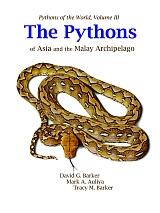

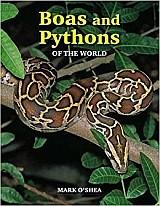

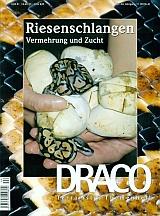

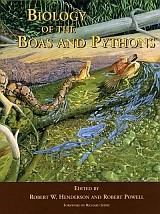

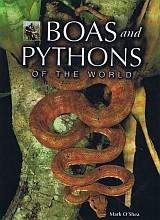

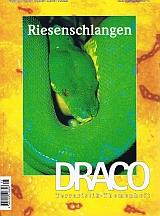

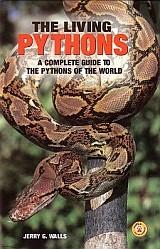

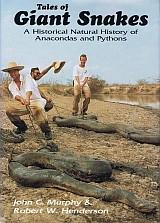

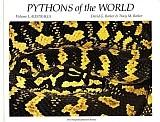

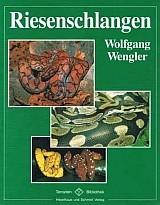

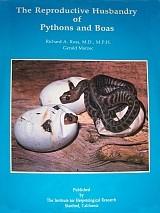

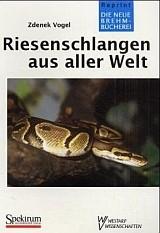

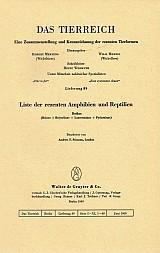

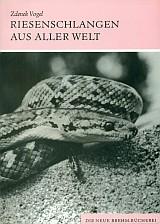











































































































































































|

